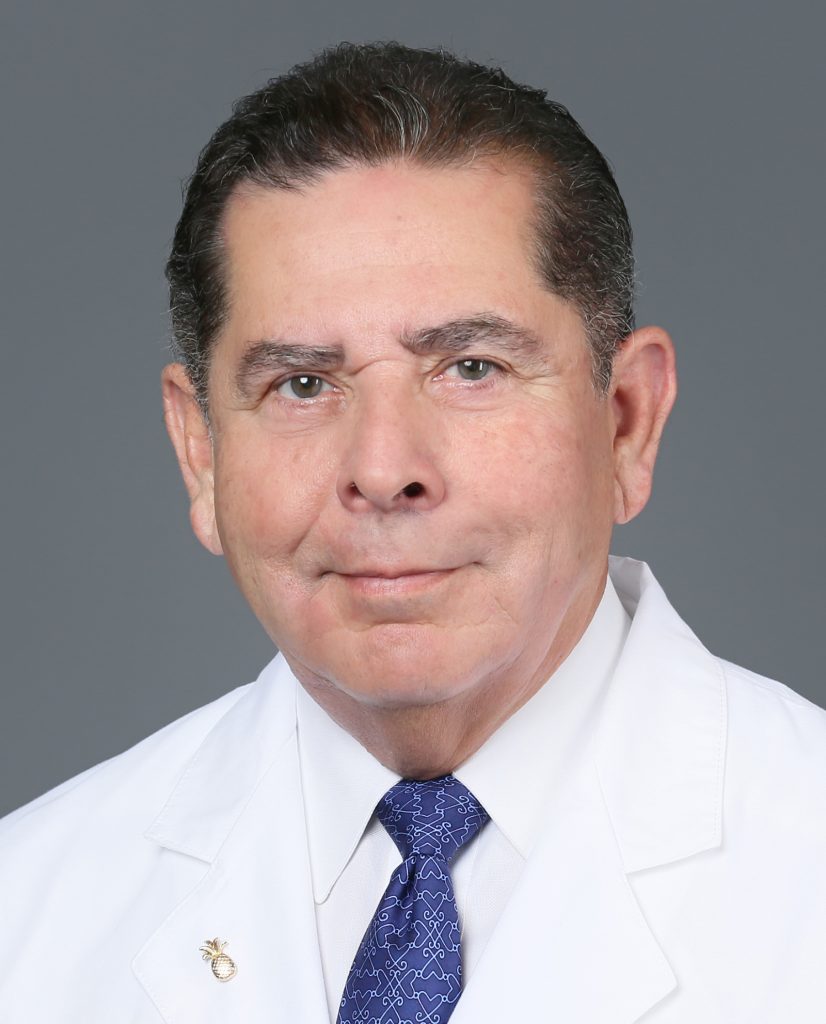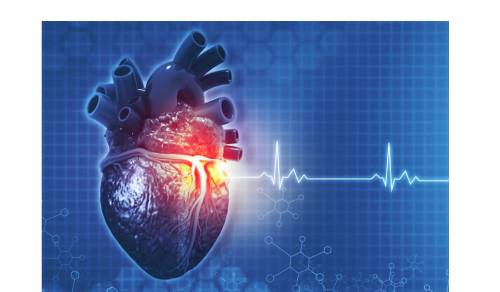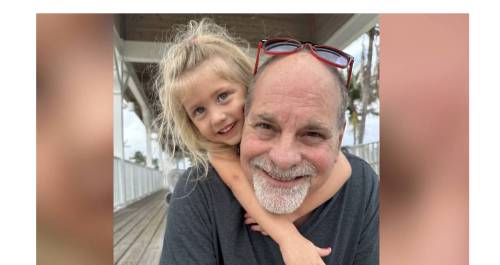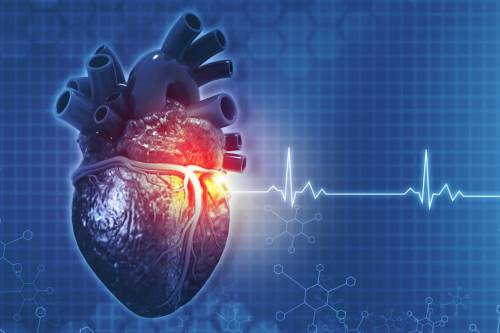
Science
Advances in Repairing or Replacing Heart Valves Continue at a Steady Pace at Baptist Health Miami Cardiac & Vascular Institute
6 min. read
Baptist Health Miami Cardiac & Vascular Institute
Pivotal advances in treating or replacing heart valves, many of them initiated as part of national clinical trials, have taken place at Baptist Health Miami Cardiac & Vascular Institute over the past two decades. And they continue at a very steady pace.
Everyone’s heart pumps with the vital help of four valves that direct blood in and out of each chamber – the aortic, mitral, tricuspid and pulmonary valves. When the valves are diseased or structurally deficient, the result can be critical or even deadly for patients. Advances in treating valves have focused on minimally invasive, catheter-based procedures that generally ensure quick and smoother recoveries compared to outright surgeries.

Ramon Quesada, M.D., medical director of Structural Heart and Complex Percutaneous Coronary Intervention at Baptist Health Miami Cardiac & Vascular Institute.
“By taking part in clinical trials, we've been part of the cutting-edge technology to provide our patients a high level of care even years before new devices are widely available,” explains Ramon Quesada, M.D., medical director of Structural Heart and Complex Percutaneous Coronary Intervention at Baptist Health Miami Cardiac & Vascular Institute. “And that's why it's important to have our very strong research program.”
Heart valve disease occurs if one or more of the heart valves — the tricuspid, pulmonary, mitral, and aortic valves — do not open fully or they allow blood to leak back into the chambers. Heart valves can have three basic kinds of problems: regurgitation, stenosis (narrowing), and atresia (lacking an opening for blood to flow through).
Valve Complexities: Aortic vs. Mitral
Many more advances have been linked to replacing the aortic valve via a minimally invasive procedure called TAVR, or “transcatheter aortic valve replacement.” The aortic valve is not as complex as the much more intricate mitral valve, which can present more critical issues, even for young heart patients. In 2019, TAVR exceeded all forms of surgical aortic valve replacement (SAVR) for the first time.
Now, more patients than ever can undergo TAVR and avoid SAVR. Since the first TAVR device was approved in 2011, access has been extended from patients considered inoperable or at extreme risk (2011), at high-risk (2012), intermediate-risk (2016) and low-risk (2019) for SAVR.
“The aortic valve is the least complex valve -- we take it out and replace it with a new one,” said Dr. Quesada. “The aortic valve is like an odometer of a car. But the mitral valve is very complex. It’s like the cockpit of a commercial jet in comparison. Repairing the mitral valve is complex because of its intricate structure that involves not only the valve itself, but the annulus (an oval-shaped structure around the mitral opening, which works a sphincter) and the muscle on the left ventricle:
There are also two conditions to consider regarding the mitral valve, he adds. Primary MR and secondary MR. The backflow of blood through the valve is a serious condition known as mitral regurgitation, or MR. Primary MR is a disease of the mitral leaflets or chords. Secondary y MR is caused by disease of the left ventricle (LV) or left atrium (LA).
“In other words, primary MR is a disease of the valve itself, while secondary MR is when it's a disease of the muscle,” Dr. Quesada explains.
Implants to Treat Mitral Valve Disorders
The latest advancement at the Institute in treating the mitral valve involves the PASCAL (Precision Transcatheter Valve Repair System) implant which is inserted using a tube-like delivery catheter through the largest vein (femoral vein) in the groin area and guided through the blood vessel to the left side of the heart.
“The way the device can be removed from the ventricle when you are in areas that are very dense in the commissures. The PASCAL device makes it easier to work in those areas -- that's a major advantage.”
The permanent implant looks and functions like a clip. Once in the heart, the clip is used to grasp the two tissue flaps (leaflets) of the mitral valve in the heart, which is the valve that controls blood flow between the top and bottom chambers of the heart’s left side.
The PASCAL implant was approved last September by the U.S. Food and Drug Administration (FDA). The implant clips the two flaps together to reduce MR, or the backflow of blood through the valve. PASCAL is the latest implant to help patients with serious mitral valve issues.
Since 2006, the Institute also has been at the forefront of MitraClip procedures and had been involved in many related clinical trials. As a result of the Institute’s success in these trials, the MitraClip was introduced in 2013 to treat patients with MVP (mitral valve prolapse), and other abnormalities that does not allow the mitral valve to close properly. Mitral valve prolapse is a condition in which the two valve flaps of the mitral valve don’t close smoothly or evenly, but bulge (prolapse) upward into the left atrium.
“The PASCAL device’s approval was based on a randomized trial comparing PASCAL to MitraClip,” explains Dr. Quesada. “But it’s not superior to MitraClip. We have a lot of experience with MitraClip. But PASCAL has a very unique characteristic that make it more suitable for usage. It's more suitable for patients with certain structural heart anatomies.”
The Institute is also one of the U.S. medical centers taking part in the EMPOWER Trial, with the objective of assessing the safety and efficacy of the CARILLON Mitral Contour System in treating heart failure in patients with at least mild functional mitral regurgitation.
The Institute also participated in the TRILUMINATE Trial, to demonstrate the safety and effectiveness of the TriClip device in improving clinical outcomes in symptomatic patients with severe tricuspid regurgitation (TR), who are at “intermediate or greater estimated risk” if they undergo traditional tricuspid valve surgery.
“The randomized trial is completed, and now we're doing the TRILUMINATE registry,” said Dr. Quesada. “So, patients can get the procedure done without going through randomization, which is very important. Once the data is completed, we can expect approval for the tricuspid device probably within the next year or two.”
Advances in Treating the Left Atrial Appendage (LAA)
Last year, the Institute was the first medical center in Florida to use an innovative new system to create a small surgical passage through the atrial septum — the wall between the right and left atrium of the heart. This innovation now provides safer and more predictable outcomes during vital structural heart procedures that require this so-called “transseptal puncture and access” into the heart.
Dr. Quesada utilizes this system for left atrium appendage closure (LAAC) cases. It is named the SafeCross™ Transseptal Radiofrequency Puncture and Steerable Balloon Introducer System, or SafeCross. It consists of a bi-directional steerable introducer sheath to reduce the risk of atrial wall perforation. SafeCross also provides a radiofrequency puncture dilator, making it a needle-less system.
The left atrial appendage (LAA) is a small pouch on your heart’s left atrium, where blood normally flows in and out. In patients with AFib (atrial fibrillation), an irregular heartbeat that is caused by irregular electrical signals in your heart, blood clots can form in the LAA. Procedures that can utilize the SafeCross system reduce the risk for future strokes, much like take blood thinners would. Patients may not need to take blood thinners after undergoing a left atrial appendage.
The Institute has taken a leading role in clinical studies that have led to approvals by the FDA. That was the case with the Amplatzer Amulet, from Abbot Medical, which received FDA approval in August 2021. After the approval, a team at the Institute led by Dr. Quesada became the first in Florida to implant the device in patients — a man in his 70s and a woman in her 80s.
The Amulet device effectively closes off the heart’s left atrial appendage (LAA) to keep harmful blood clots from entering the blood stream and potentially causing a stroke. In a randomized clinical trial for Amulet, the Institute and a team led by Dr. Quesada played a key role. The Institute has been a part of the clinical trials related to LAA closure innovations and devices since 2005.
“There’s no doubt that the future is looking great for structural heart interventions,” said Dr. Quesada.
Healthcare that Cares
Related Stories
View All Articles
Structural Heart Disease: The Rapid Pace of Advances in Replacing, Treating Heart Valves
February 12, 2024
5 min. read

Second Heart Valve Replacement Returns Patient to Active Life
February 7, 2024
3 min. read

Heart Murmurs: Why You Shouldn’t Ignore That Heartbeat’s Extra Noise
April 5, 2023
3 min. read